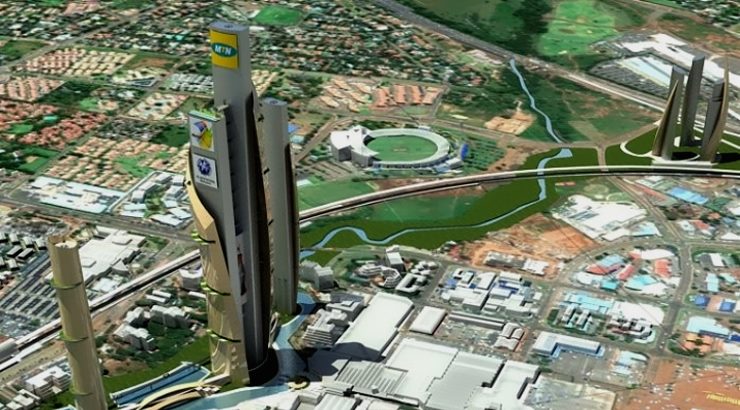Commercial Projects
Africa’s Tallest Building Proposed for South Africa
Centurion Symbio-City is expected to be the 14th tallest free-standing structure in the world.

South Africa is set to become home to one of the world’s tallest structures, according to the executive mayor of the city of Tshwane.
Kgosientso Ramokgopa said the proposed Centurion Symbio-City will be constructed in the current site of the Centurion Lake (located between Pretoria and Johannesburg) and it will be 447 meters high with 110 floors.
“Centurion is situated within the development corridors (Ben Schoeman highway and the N1 highway corridor) linking Pretoria and Johannesburg and thus it will be a key player in the proposed high-intensity developments which are destined to take place in the region,” Ramokgopa told reporters.
Centurion Symbio-City, flanked by two towers of 80 and 60 floors, is expected to be the 14th tallest free-standing structure in the world – taller than New York’s Empire State Building and only 5 metres shorter than the Petronas Twin Towers in Kuala Lumpur, Malaysia.
On completion in 2018, Centurion Symbio-City will topple the 223 metres tall Carlton Centre in Johannesburg from its long-held position as Africa’s tallest structure.
RELATED: 10 Tallest Buildings in Africa
The building will comprise one residential and two office towers and will include a convention centre, shops, hotels, 10 hectares of land, and a lake.
Johannesburg-based 126Group Architects designed the project’s three towers that will be built at an estimated cost of R17 billion.
The project has however been criticized by architects and local businessmen who said it was ill-conceived because the proposed building does not fall into an urban context of any form.
“Skyscrapers should be constructed as a result of property constraints within dense urban environments – where building up is really the only option. It is worrisome when developers use verticality as a development model where it isn’t required,” said Guy Trangos, a Johannesburg-based architect.














